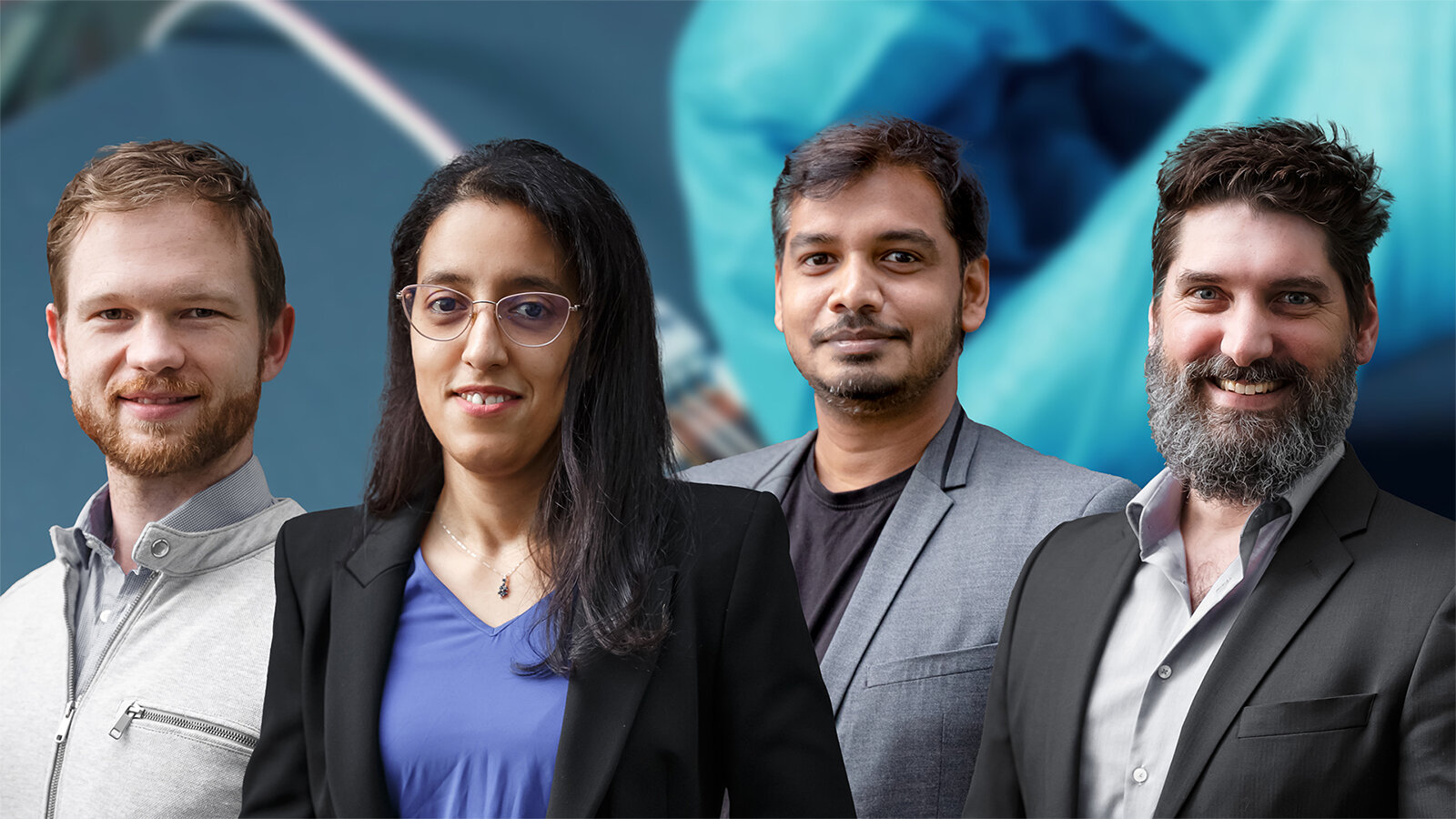Making efficient polymer sensors ready for production
Start-up project NanoSen builds production line for market entry of innovative force sensors for smart materials
-

“NanoSen” Start-up Team Members (from left): Rick Henkner, Dr. Sonia Bradai, Rajarajan Ramalingame and Joseph Stephens. Photos/Montage: Private/Niklas Schindler -

The NanoSen project is funded by the Federal Ministry for Economic Affairs and Climate Action and the European Social Fund as part of the EXIST program. Logos: Free State of Saxony, ESF, Exist start-up program
On the 1st of October, 2022, the new start-up project “NanoSen“ was launched at the Chemnitz University of Technology. The NanoSen team comprises of Joseph Stephens, Rajarajan Ramalingame, Rick Henkner and Dr. Sonia Bradai. Before the start of the project, Ramalingame and Bradai had been long-term research associates at the Professorship of Measurement and Sensor Technology (Head: Prof. Dr. Olfa Kanoun). Stephens and Rick come from the faculties of Economics and Business Administration and Mechanical Engineering, respectively, to be able to contribute their expertise in this international and interdisciplinary team. Prof. Dr. Olfa Kanoun supports the entrepreneurial team as a mentor, i.e., in the areas of flexible polymer sensors, impedance spectroscopy, self-powered wireless sensors, energy harvesting and energy transfer.
"Our goal is to build an innovative production line to manufacture low-cost nanocomposite force sensors in mass quantities, which as of yet, has otherwise not been possible." says Joseph Stephens. NanoSen nanocomposite force sensors are high performance devices with an extended range that can measure the weight of a sewing needle and up to 40 liters of water. They consist of a very flexible and stretchable polymer, such as silicone, in which conductive nanoparticles have been dispersed. They are also washable, which makes them very attractive for textile integration. Until now, production has been very limited, only being able to manufacture around 200 units in eight hours. "With NanoSen, we are developing a system that can produce around 13,000 sensors per day," says Stephens.
Through increased availability, more applications are also made possible. The new manufacturing process should provide the opportunity for use in consumer products, which was previously not economical in mass production. This would enable the use of this integrated sensor technology in garments and wearables, which can be used in telemedicine and competitive sports for digital health and fitness applications.
In order for this vision to become reality, the team will receive 900,000 euros of funding over a period of 18 months as part of the EXIST Transfer of Research program. This allows the freedom to develop a business plan and establish a basic structure. In addition, the project is accompanied by the start-up network SAXEED as part of the "Master Class".
Each and every member of the team already has his or her fixed tasks: Rajarajan Ramalingame is the author of the idea and is responsible for the development of nanocomposite sensor materials. He takes care of designing the synthesis process of different polymer materials, the realization of sensors as well as the optimization and characterization of sensor parameters. In the future, he will also become the CEO of the company. Dr. Sonia Bradai will primarily focus on developing the form module and be responsible for the pairing of the synthesis and form modules. Rick Henkner finishes off the production line with the development of the functional units, post-processing and packaging equipment as well as for the assembly and commissioning of the entire production line. Joseph Stephens, former technology scout and start-up consultant at the start-up network SAXEED, has taken over the area of business administration.
(Author: Matthias Fejes / Translation: Brent Benofsky)
Matthias Fejes
17.10.2022




